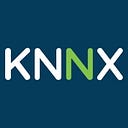Member-only story
What are the Benefits of Using Visual Models in Requirements Gathering for Business Analysis?

The process of requirements elicitation is concerned with understanding the needs of stakeholders. There are a number of techniques for eliciting requirements from stakeholders.
These steps are made easier by the use of visual models that help in understanding the needs of the stakeholder better, by making it easier to understand small details that may be otherwise missed.
Visual models help to provide context of requirements, especially in the multi-system development projects.
Why create visual requirement models?
Visual communication should be employed by Business Analysts when interacting with stakeholders to ensure that information is passed accurately. When images are incorporated into elicitation techniques, they can help improve stakeholder engagement.
Several pieces of research have shown that diagrams, graphs, and images influence learning outcomes more than the written word.
There is no question that visual models are effective. But how do visual models save time and increase project success?
On a high level, visual requirements models do so in 3 main ways:
- They help validate the project’s scope
- They improve the efficiency of requirements elicitation sessions
- They facilitate a better understanding of requirements
1. For Validating Project Scope
The scope of the project refers to the detailed set of deliverables or features of a project. These deliverables are derived from the project’s requirements.
PMBOK defines project scope as “the work that needs to be accomplished to deliver a product, service, or result with the specified features and functions.”
It is very important to understand what everyone is expecting to get out of the project. But, many nuanced details can get lost in translation or may not be easy to convey to stakeholders in an effective way.
